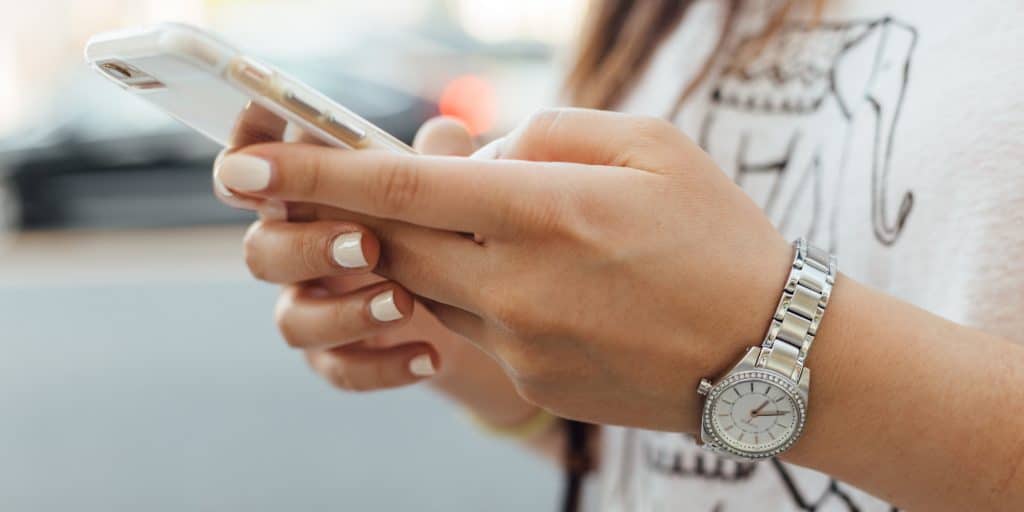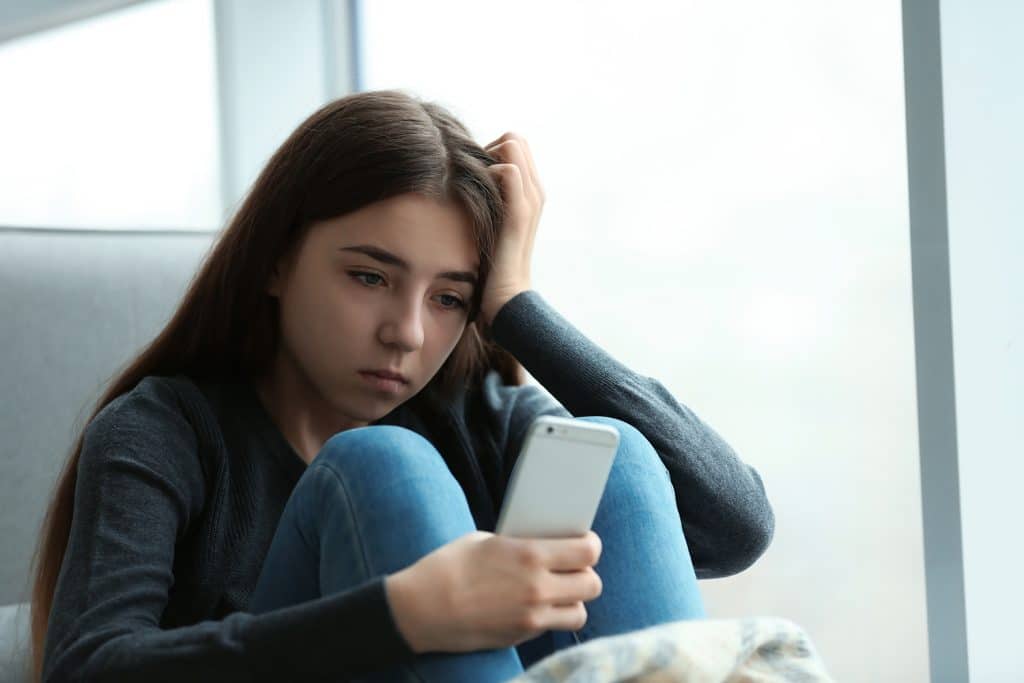Posts, likes, DM’s, hashtags, followers: what started as a simple social networking platform just over one decade ago, has evolved into many people’s primary source of validation and self-worth.
During the inception of social media, the young generation was well into their high school years. The current parenting generation was the last to live out most of their adolescence without the heavy influence and impact of the internet and social media. It is the current and future generations of children that are in danger.
Social Media addiction is a powerful and detrimental dependency, and it is taking over the lives of our children. Parents must know what threatens the well-being and stability of their children every time they log on to their social profiles.
We hope to provide insight, helpful resources, and support with this article.
What is Social Media Addiction?
Social media addiction is a behavioral addiction. It includes an over-concern about social media, driven by an uncontrollable urge to log on to or use social media and devote time and effort to social media that it impairs other important areas of life.
“According to a new study by Harvard University, self-disclosure on social networking sites lights up the same part of the brain that also ignites when taking an addictive substance. Due to the effect on the brain, social media is addictive both physically and psychologically.” (Hiliard, 2019).
That’s right. Social media is placed right alongside other harmful and addictive substances or habits: alcohol, drugs, gambling, sex–social media has proven to have the same effect on the brain.
Why is Social Media Addictive?
Social media is structured in a way that it activates feel-good chemicals in the brain. These neurochemicals, like dopamine, can be deeply addictive.
“The reward area in the brain and its chemical messenger pathways affect decisions and sensations. When someone experiences something rewarding or uses an addictive substance, neurons in the principal dopamine-producing areas in the brain are activated, and dopamine levels rise. Therefore, the brain receives a ‘reward’ and associates the drug or activity with positive reinforcement.”
Do you get excited when you see people have liked your post? Do you feel validated when you read positive comments on your photos? When you gain a new follower on Instagram, how do you feel? Important? Energized?
This is the addictive aspect of social media at work. The “rewards” of a like, comment, or new follower elicit a mental and emotional response from the user, making them want to come back for more. And so they do–over and over again until a fixation develops.

Social Media Addiction Facts
A terrifying truth is that, with easy access to technology, the detrimental consequences of social media addiction are most threatening to kids and teens. Addiction to social media begins to meddle with their reality; a reality that they themselves are just starting to figure out. Likes and comments and quantity of followers become the rulers by which they measure their success; their beauty; their self-worth.
A 2018 Pew Research study found that “43% of teens “feel pressure to only post content that makes them look good to others”, while 37% “feel pressure to post content that will get a lot of likes and comments” (Kinzoo Blog, 2019).
Unlike drugs or alcohol, kids and teens today have regular access to social media, usually by simply reaching into their pocket for their smartphone. Because of accessibility, social media has great potential to do the most harm to this young generation, maybe even more so than other harmful substances.
“Though these digital forms of validation make us feel good in the moment, they can also have long-term consequences. There are several studies that show a high correlation between social media use and decreased mental health in both adults and children.”
Following are some facts about social media addiction:
- A 5,000 person study found that higher social media use correlated with self-reported declines in mental and physical health and life satisfaction (The Social Dilemma, 2020).
- Too much time spent on social media as well as lack of sleep can affect behavior and cognitive performance in school and interfere with learning (Cross, 2020).
Social Media Addiction Statistics
Sadly, stats about social media addiction in young people are staggering. Find more below.
“Teens are spending more than one-third of their days using media such as online video or music–nearly nine hours on average, according to a new study from the family technology education non-profit group, Common Sense Media. For tweens, those between the ages of 8 and 12, the average is nearly six hours per day.”
- 10% of teens check their phones more than 10X per night (MediaKix, 2020).
- “Facebook and Instagram are the most popular, each used by 77 percent of kids” (Tode, n.d.).
- While they haven’t received formal diagnoses, 50% of teens claim they “feel addicted” to their smartphones. (Fortune, 2016)
- When it comes to social media use specifically, 27% of children who spend a minimum of 3 hours per day using social media have symptoms associated with poor mental health. (Addiction Center, 2021)
- Overall, around 45% of teenagers check their smartphones after going to bed. Of them, 94% are using social media apps. (HMC, 2016)
How Many People are Addicted to Social Media?
“According to nonprofit Common Sense Media, “of over 1,200 parents and teenagers surveyed, 50% of teens said they “feel addicted” to their mobile devices.”
Any percentage of kids and teens suffering from the repercussions of social media addiction would be too many. The sad and frightening reality is that social media addiction is on the rise, more in kids and teens than in adults.
- “22% of teenagers log on to their favorite social media site more than 10 times a day, and more than half of adolescents log on to a social media site more than once a day” (O’Keefe & Clark- Peterson, 2011).
- “According to a survey by YouGov, 2 in 5 children aged 8-12 years spend two hours and more online, with almost half of those aged 13-17 saying that they spend a similar amount of time online with at least some of it dedicated to using social media” (Owaida, 2020).
- “Teens aged 13 to 18 average 3 hours and 1 minute per day [on social media]. Some teens, however, spend up to 9 hours every day on social media – much more time than they spend in school” (Geyser, 2021).
If children continue to have access to the internet and social platforms at a younger age, the more susceptible they will be to the life-altering consequences of addiction to social media.

How to Break Social Media Addiction
It can feel overwhelming to hear these sobering statistics. So how can parents and families help their kids recover from any level of social media addiction?
Social Media Fast
Whether it’s “No-tech Tuesdays” or an entire week to two weeks of living tech-free in the home, kids and parents can greatly benefit from a social media fast. “To fast” means to willfully refrain from food or water, and in this case, from social media. Decide what length of time would be the most beneficial for your family to refocus.
Enjoy fun family activities and productive tasks away from social media and technology. Remind your children of life outside their social platforms. Reconnect and take time to establish collective standards and regulations for future tech use in the home.
Cell Phone Curfew
At a decided hour in the evening, or even as soon as they arrive home from school, ask your kids to turn in their phones/devices. By having a central location for all devices, rather than in pockets, families can be present and enjoy uninterrupted and undistracted time together.
Established Tech Time
If your kids need access to technology to do their homework, or if the family still agrees on some screen time at home, establish a brief, scheduled window of time for your kids to use their devices. Keep to the agreed-upon time in the family’s schedule. Do not allow for tech time to start early or run late. So long as parents continue to regulate screen time in the home, families can still have a healthy and balanced relationship with technology.
Gabb: The Solution to Social Media Addiction
Still, constant tech monitoring and struggling to maintain guidelines for screen time can be challenging and tedious. How else can parents preserve a real connection to their kids, help them enjoy real-life experiences, and keep them safe from the many dangers that come from social media addiction?
Enter Gabb-the leading tech company providing devices made especially for kids. All Gabb devices-from simple GPS trackers to smartwatches to smartphones -come free of social media, internet browsers, excessive apps, or addictive games. Gabb is an advocate for introducing tech in steps, according to each child’s level of tech readiness.
By providing the connection they need and essential tools without excess, Gabb provides kids the opportunity to seek enjoyment beyond the “likes”, reels, and followers and enjoy their childhoods. With Gabb devices, kids spend 80% less time in front of a screen and using social media. Instead, they are staying active and cherishing relationships with family and friends.
With Gabb, parents have peace of mind for the safety of their kids. By connecting families, keeping kids safe from online dangers, and giving parents the tools to raise their children responsibly with their tech, Gabb could very well be the solution to child tech addiction.
_________________________________________________________________
Gabb is dedicated to helping families build and maintain healthy tech habits and rearing tech-responsible kids into adulthood. Find Gabb products, read about the Gabb mission, and access additional Gabb resources here.









Success!
Your comment has been submitted for review! We will notify you when it has been approved and posted!
Thank you!